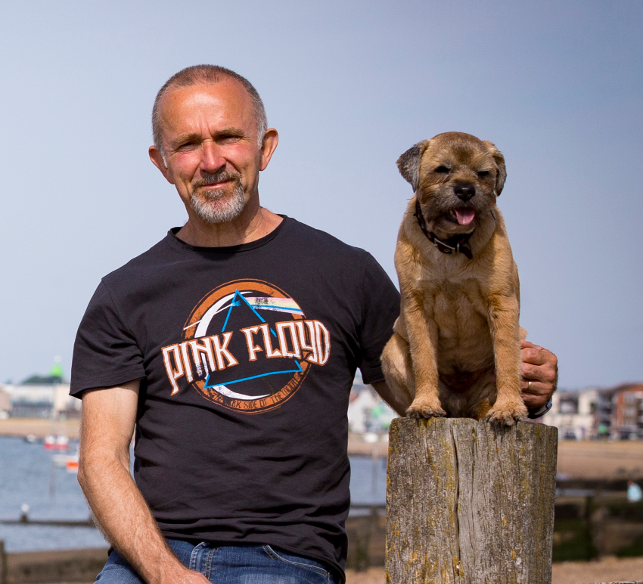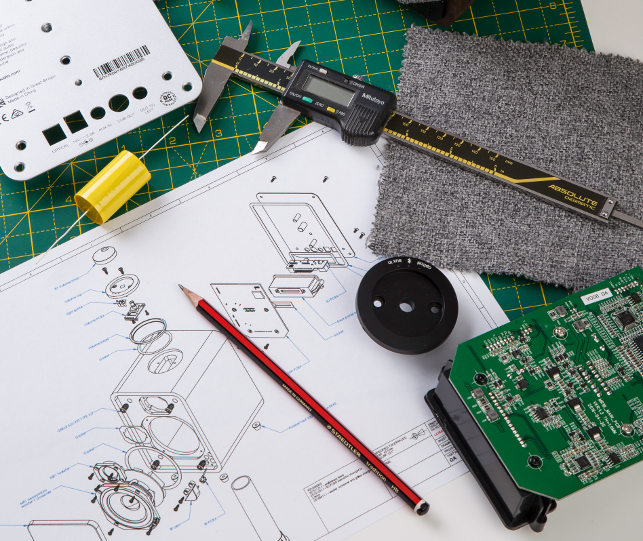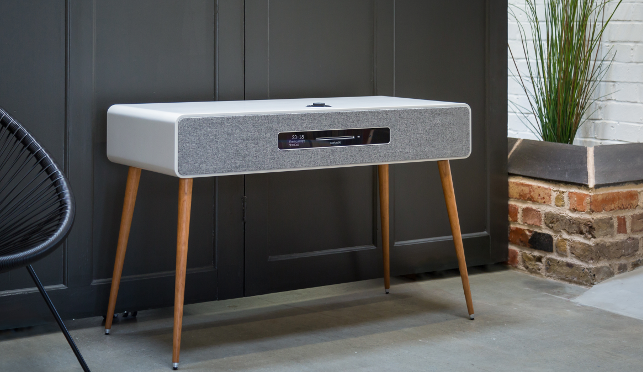
Ruark’s flagship product is the R7 radiogram, the third generation of which will launch in October 2017
2006 was significant for Ruark Audio. It was the year its R1 radio product was launched and saw the company forge a new path away from hi-fi speakers, which it had been creating for 20 years, towards a future in audio systems. It knew it was onto a good thing when the Sunday Telegraph described the new product as “the Aston Martin of DAB radios“, something that the company still applies to its product range today.
“This is the perfect analogy. We’re happy to be a niche British company because we don’t want to compromise on any aspect of any product or be hampered by designing to a price,” says Alan O’Rourke, Ruark Audio’s managing director who co-founded the company with his dad, Brian O’Rourke, in 1986.
As a child, while his dad was carving out a career as a cabinet maker in the British audio industry, Alan O’Rourke was exhibiting the telltale signs of following a career in engineering: a love for “fiddly things” and an obsession for taking objects apart and then putting them back together again – even his guitar.
He did go on to study mechanical engineering and worked at the Ford Motor Company. However, sharing his dad’s passion for music, the pair decided to set up Ruark Audio and apply what they knew about cabinet making, engineering and sound to the creation of hi-fi speakers.
“The hi-fi industry has grown from people like us – hobbyists who had a passion for it and then turned that hobby into a business. Our first speakers were delivered to local shops and it grew from there,” describes O’Rourke.
All the speakers were designed and manufactured in-house in a small factory in Southend-on-Sea. Having outgrown that space, Ruark Audio moved to a bigger facility 20 years ago, where it is still located today.
“In those days, the designs were all done through sketching and drawing boards. In 1991 we invested in AutoCAD, which I then used to create the designs but it was still all in 2D,” says O’Rourke.
Ruark Audio – Forging a new path
By 2004 the hi-fi speaker market was slowing down, his dad had retired and O’Rourke was considering where the company should go next. It was around this time when the BBC started rolling out its national digital radio network.
With the prevalence of DAB (digital audio broadcasting), a spark went off in O’Rourke’s head. Could Ruark Audio design its own high quality digital radio?
Having been approached previously by a Taiwanese manufacturer that wanted to produce its hi-fi, and though at the time Ruark’s products were manufactured in-house, for this project O’Rourke considered using the company for both the design and manufacturing.
“Perhaps it was a bit naive to think we could use their design facilities. A friend warned that we should control that part of the process ourselves – let them manufacture it and we do the design and engineering in-house,” comments O’Rourke.
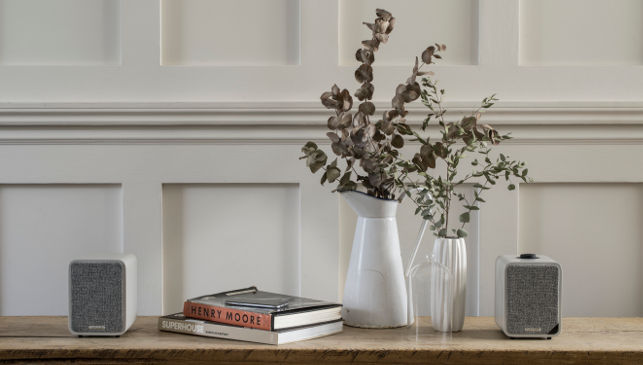
The MR1 bluetooth speaker system, which launched in 2013, has been improved for 2017 in the MR1 Mk2
Launch of the R1 radio
That is when Jan Paoli, Ruark Audio’s product design manager came onboard. With a background in mechanical engineering and a degree in industrial design from the Royal College of Art he had the right mix of skills needed and together they set to work designing the R1 radio.
For O’Rourke, getting the design right was really important. He wanted to apply the same philosophy embodied in its hi-fi speakers – beautiful and distinctive designs that people want in their homes – to this new product. He also didn’t want it covered in buttons, it had to be clean and simple to use. He was inspired by a new mobile phone that had been launched at the time by Bang & Olufsen, which featured a large dial controller.
“We put a lot of effort into creating that first product and, although it sounds a bit cheesy, we wanted it to be a timeless design. If someone saw it from the other side of the room or on a crowded store shelf amongst other radios, it would catch their eye,” describes Paoli.
From the R1 radio in 2006 the model range has expanded to the R2, R4 and the flagship R7 audio systems and then the MR1 speakers. Despite aesthetic and technical updates – the R1 is in its third generation now – the range is kept purposely small.
“Our range is limited for a reason,” says O’Rourke.
“Ultimately, we want every product to be the best it can be and for each of them to have its own role. No product treads on another’s toes, and the designs all look like a family.”
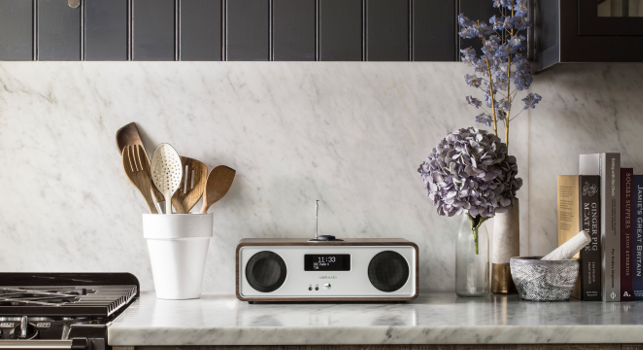
As with the R1 and R4, the R2 comes in three finishes: walnut veneer, white and black
Ruark Audio – Reimagining the radiogram
Although O’Rourke claims to be less involved in the design and development process, he is still very hands on often coming up with the ideas for new products himself. For instance, it was his idea to reimagine the radiogram which led to the launch of Ruark’s flagship R7 product, the third generation of which comes out this October.
Considering the retro styling of its product, a radiogram was a perfect addition to the range. Particularly popular in the post-war era, this product traditionally saw a radio and record player being combined as a piece of furniture.
Although Ruark’s take on the radiogram features digital radio and a CD slot, amongst an array of other technologies, with dimensions of 100 x 42.5cm and ash spindle legs making it 65cm tall, like its predecessor it is very much meant to be the focal point of any room.
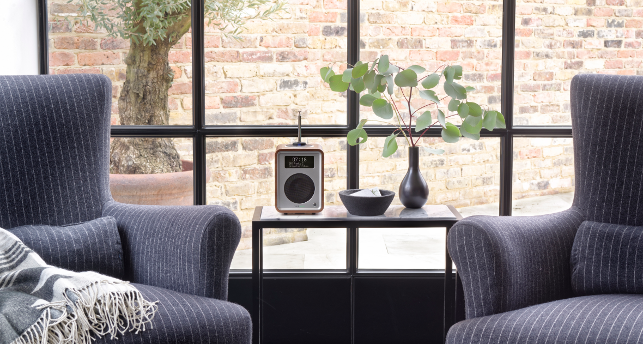
Ruark’s journey into creating radio products started with the R1 in 2006
Complexity of technology
Although a typical development process at Ruark is 18 months from a consolidated concept through to the product launching on the market, Paoli says that it can sometimes take longer and that’s down to the complexity of all the technology that has to be housed inside its products nowadays. These include Bluetooth receiver, DAB, DAB+, FM, Internet tuners, Spotify Connect, switchable analogue and digital inputs, and USB power port.
“Take the R1. From the outside it looks apparently very simple with one push button and a RotoDial for volume, but the tech that goes on inside there, for us, is a lot of work,” confesses Paoli.
With any new design project, Paoli spends hardly any time sketching and instead gets into SolidWorks almost immediately. “The first thing I would typically do is a single block model. There are no internal features or components, it is just a really rough and ready way of modelling stuff up.
“At which point, we can quickly start playing around with proportions and different configurations. It’s really quick to just change the aspect – make it taller, a bit wider, a bit deeper, change the colours etc. It means that we can be in a creative meeting and be varying stuff live on a big screen.
Then, once we have settled down on the overall shape and proportions, we start building up the details,” he explains.
Having worked up the 3D model, a fair amount of prototyping will take place before any tooling is done. All testing of prototypes, including audio and electronics testing, is undertaken by the small design team at Ruark.
“We used to do a lot of SLA and SLS in the UK but funnily enough we actually found that we get better results when we machine a part from solid in China,” comments Paoli.
“So it takes a bit longer – a week or sometimes less – but it is cheaper and you get a really good finish straight out the box. This means that we actually get to use it – it is convincing enough for people to look at and believe that it is a real part.”
Once the 3D model is finalised, the CAD files are sent digitally to the toolmakers in the Far East, who will then do any tweaks and send the files back.
“We then sign off the tool making sure that they haven’t messed about with our design too much. We try and design appropriately for tooling but obviously the toolmaker always has reasons to do things slightly differently but they can have a profound effect on the aesthetics. So where a split line is on a piece of plastic, for instance, whether it is visible and if you can feel it etc.” says Paoli.
The design team visit the factories regularly and seeing the production and assembly lines does make O’Rourke feel nostalgic for the early days when Ruark had a busy workshop in-house.
“It reminds me of how we used to do things here but there is just not the cabinet works capability in the UK anymore. They just can’t deliver on the scale that we want.
“I think what the government needs to do is invest in manufacturing and machine tools maybe through interest free loans or tax breaks. We definitely need manufacturing jobs here,” says O’Rourke.
All of Ruark’s products are designed and tested in-house by a small team who strive to create beautiful products with superior sound (to enlarge image click here)
Small but mighty
The same CAD data used in the design process – including cutaways and exploded views – is utilised by Paoli for the illustrations in the user guides and on the product packaging, which is also designed in-house.
There is no doubt that this is a busy team. The latest version of the R7 has just launched, the new MRx smart stereo speakers are in the final stages of development and not to mention the other five projects that are currently on the go.
“If you have the experience and skills in-house as well as the digital tools – be it 3D CAD, audio modelling or modelling of circuits – it doesn’t take that many people to get an awful lot done. And we often find that it’s the factory that is the bottleneck, we can actually out pace a lot of what they are doing.
“Whereas 40 years ago, or even not that long ago, it would be the other way round where you had a whole draughting office with engineers and draughtsman drawing stuff,” comments Paoli.
As I leave, the team get back to measuring and listening to samples of the drive units for the new MRx speakers, the launch date of which has been delayed, not due to any bottleneck from the factory’s side, but rather the design team’s drive for perfection.
This is, of course, no bad thing. “Alan will not let a product go out to the shops until it’s the way that he expects it to be,” says Richard McKinney, Ruark Audio’s sales director.
“In some ways it can be frustrating from a sales point of view because you want to get it out there as quick as possible but in the long term it’s the right thing to do.
It’s that attention to detail that makes our products the success that they are, both aesthetically and in terms of sound quality.”


